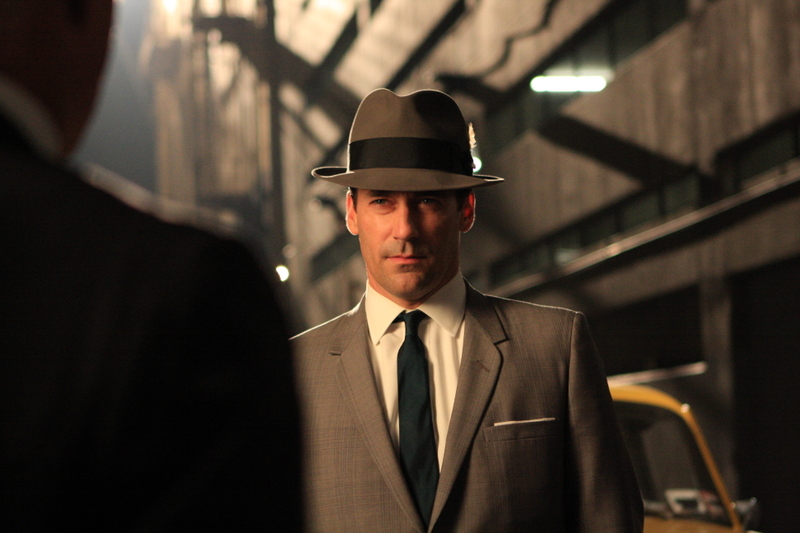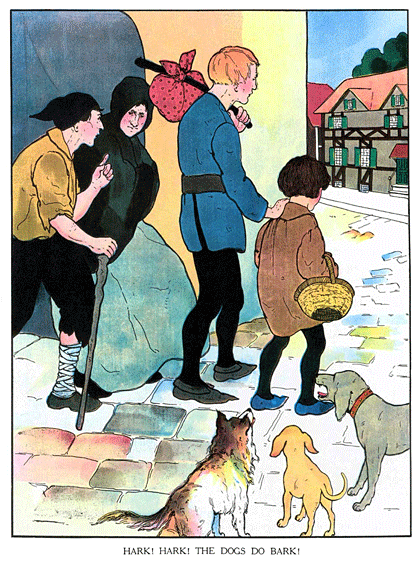
... and this news report in the Stranger:
Police Beat
The Crime of Barking
Officer Gary McNulty reports: "Victim was outside of the business with her service dog. The suspect was behind a pillar when the victim's service dog began to bark. The suspect pulled a knife and started to walk toward the dog. The victim heard her dog barking and looked to see what it was barking at. The victim did not [recognize the man walking] toward her dog.
"The victim observed the suspect holding a knife in his left hand. The suspect told the victim that he was going to cut the dog's throat, at which time the victim said it was her service dog and he, the suspect, would have to cut her throat first. The suspect said he would cut her throat also. The suspect continued to close in on the victim and her dog. The suspect got very close to the victim, within inches, still holding the knife.
"The victim told me that she felt as if she was going to be stabbed and managed to get to a phone... As Officer Schickler and I arrived on the scene, I could see that there was a female outside of the store with a dog, but no suspect. I got out of my car to approach the female—at which time the suspect [who had not left the scene!] came out from the area where he had been using a large pillar to conceal himself.
"The suspect was told to stop and to keep his hands out where we could see them. The suspect did not follow these commands and continued to close in on us. The suspect was less than 12 feet away when he reached for his left rear side. We were now yelling for the suspect not to reach for anything but to put his hands out where we could see them.
"Officer Schickler and I closed in on the suspect, and we each took an arm and began to walk him toward the front of my patrol car. The suspect tensed up and at first seemed like he was going to struggle. The suspect was finally walked to my patrol car and Officer Schickler removed a black knife sheath containing a black-handled knife from the suspect's left rear pants pocket."
Yes, the suspect was wrong to threaten the woman with a knife, but it's also important for dog lovers to appreciate the fact that many humans profoundly hate dog-barking. The very sound of it can grab a soul and shake all reason and sense of calm out of it. To you, the owner, the barking sounds like a little chitchat; to others, it is the last thing you want to hear "up in your bubble."
On the other hand...
Chronic barking is one of those topics about which everything you think you know is wrong. For example, you would assume that if your neighbor's dog barks in such an extreme fashion that your quality of life is devastated and the health and well being of your family is imperiled, that you could turn to your local police and animal control departments and get timely relief from the ongoing torment.
After all, you are the victim - right? And your recalcitrant neighbor who refuses to take responsibility for his dog is the perpetrator. Therefore, surely after the authorities receive your complaint, they are going to step in and force the dog owner to do the right thing - aren't they?
No, probably not. The fact is that the legal system seems to have been set up to make it something between difficult and impossible for you to use the resources of law enforcement to force your neighbor to take responsibility for his dog. Far from protecting you from abuse at the hands of the irresponsible owner, you will find that the system will run interference for the dog owner, and work to block any attempts you make to correct the problem.
The legal system cannot rein in an irresponsible or malicious dog owner unless three things are in place:
- A good law
- an available law enforcement official who is willing to enforce the law, and
- a judge who is willing to impose penalties strong enough to serve as a deterrent.
In Santa Rosa, California, the city won't act unless three neighbors are willing to jump through hoops, but the neighbors won't jump. So there is no hope of help from the criminal law, which is so bad that it is all but unworkable.
Even if you have a good law in place, it doesn't do a bit of good unless you have available law dogs who are willing to enforce it. A case in point: In Maricopa County, Arizona, south of Carefree, what used to be a quiet desert community is now awash day and night with the sound of five Pit Bull Terriers and three other nondescript dogs who "bellow" endlessly. The dogs belong to a young man the people in the neighborhood describe as a "loose cannon" who "stares and tries to intimidate people."
For the people of the neighborhood, the noise has reached the level where their every activity must be modified to accommodate the limitations placed on them by the unrelenting torrent of noise flooding through their desert homes. As one of the neighbors said, "It's just a terrible situation," but terrible is not a strong enough word to describe the hell those people are enduring. Unless you've been through it yourself, you have no idea.
The people of the community called the Maricopa County Sheriff's Office, which provided the usual assistance you get in those kinds of situations. They didn't do a thing, which left the victims on their own with a resultant escalation of the crisis that led to several people acquiring firearms. "It's going to get pretty bad real soon," said one resident. "This was a nice quiet neighborhood. Now we're armed to the teeth like we're in some kind of war."
The sheriff's deputy said that, when he came out, the owner agreed to move the dogs from one side of his yard to the other side of his yard. The deputy thought that was enough of a good faith effort so he didn't write the guy a ticket. A spokesman for the sheriff's department said the dog's owner had been "more accommodating than other owners of barking dogs." Please, go back and reread the last sentence. Think about the implications of that statement. The officer said a mouthful.
Even if your home town has a good anti-barking law and police officers who are Johnny on the spot and ready to write tickets, it still doesn't mean a thing unless the local court is stocked with judges who are ready to crack down. Unfortunately, on the judicial level, the system more often than not falls way short in that regard as well.
In Oshawa, Ontario, the city council has received hundreds of complaints about barking dogs. Shift workers report they can't sleep at "any hour of the day or night" because of the endless barking. Imagine what it's like to come home wiped out from a day of factory work only to lie awake all night tormented by the staccato outbursts of nearby canines. Think what it's like at sunup having to drag yourself out of bed exhausted for a day of physical labor that you know will be capped off with yet another sleepless night.
Unfortunately, the Oshawa city council has announced that, henceforth, they will no longer even attempt to take action against the owners of barking dogs because the court returns so few convictions that the city fathers have decided it is "futile" to even try. It may be just as well because, even when fines are levied, they are usually so minimal they have no impact on the behavior of the offenders.
Think about this: Imagine you live near a habitually barking hound. There are four people in your family and, on average, each of you loses three hours of sleep each night to the neighbor's barking dog. That means that in one year's time each of you will lose 1,095 hours of sleep for a cumulative family sleep deficit of 4,380 hours on the year.
Now imagine that, miraculously, you manage to get the powers that be to come out and cite the dog owner. Even though the dog continues to bark every day, the city won't come back and cite the owner every day. Once the perpetrator has been issued a citation then, as far as the city is concerned, the case is closed until the matter goes to court and it can easily take a year before the court hears the case. That means that every day and every night of that entire year your family has to put up with this astoundingly stressful disruption of their lives.
Finally, after a year, the case goes to court and the judge fines the culprit $50.00. That means for every hour the irresponsible behavior of your neighbor kept a member of your household awake, he was forced to pay a fine of just a little over one penny. And you don't even get the penny. All you get is another year of victimization because, after the fine is paid, there's very little chance that that will be the end of it. You will almost certainly find that the dog will remain on the property and the barking will continue.
In Santa Rosa, if you are one of the rare individuals who is lucky enough to finally, actually get a judgment against a dog owner, you'll find the court will allow the culprit up to 30 days to quiet the animal. Let's see, if we calculate a night's sleep at eight hours, then, in thirty days, you can lose 240 hours of sleep. But, apparently, the city fathers were worried that it might inconvenience the perpetrators if they were required to stop committing the crime any sooner than that.
It couldn't be more apparent that what we have now is a system geared to harassing and hamstringing the victims, as opposed to a legal system dedicated to solving the problem by cracking down on the perpetrators.
An Emergency Situation
Anyone who believes frequent barking is properly classified as a "nuisance" must also believe that cancer is an inconvenience. When the essential character of your existence is transformed and the quality of your life is slashed, that is not a "nuisance." That is a full-blown crisis. It is an emergency that warrants immediate action.
What we need are anti-barking ordinances that can always be immediately enforced. What we have instead is a legal system that usually doesn't work at all and, on those occasions that it does bring about some result, it virtually never does so in a timely fashion. To make things worse, the current system often endangers those it is supposed to protect.
Propelling the Victim Into Harm's Way
The Multiple-Household laws, that were supposedly written to deter chronic barking, actually mandate that, before law enforcement will even consider intervening, the victimized neighbor must first interact with and take actions against the dog owner that are all but certain to engender antagonisms. Imagine the plight of an elderly woman awash in an ocean of noise from a yard full of guard dogs belonging to a menacing looking young neighbor known to use methamphetamine and to have served prison time for violent behavior. Do you really think she is going to march over to his house, as the multiple-household laws mandate, demand her right to the quiet enjoyment of her property and then organize the neighborhood in a legal crusade against him? In the actual case of this particular elderly lady dog-hater she stretched the Castle Doctrine's paramiters to the limit by blowing away the miscreant menacing looking young neighbor known to use methamphetamine and to have served prison time for violent behavior and his miscreant dog handily where they stood with her 10-gauge double gun, to the joy of all her neighbors and the constabulary as well; and was awarded the Key To The City by the forever-grateful town mayor (who had suffered horrid and continuous abuse at the brutal hands of the uncivil Civil Liberties Union over the rights of shaggy yoga dogs and shaggy chickens to bark). For further endless, lip-numbing reading about barking shaggy dogs see links below: http://en.wikipedia.org/wiki/Shaggy_dog_story http://www.antimoon.com/other/shaggydog.htm Note: In its original sense, a shaggy dog story is an extremely long-winded tale featuring extensive narration of typically irrelevant incidents, usually resulting in a pointless or absurd punchline. These stories are a special case of yarns, coming from the long tradition of campfire yarns. Shaggy dog stories play upon the audience's preconceptions of the art of joke telling. The audience listens to the story with certain expectations, which are either simply not met or met in some entirely unexpected manner.








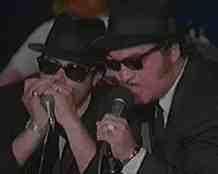
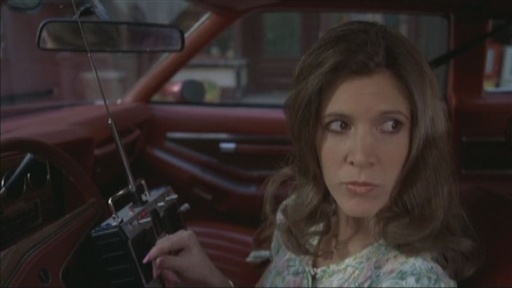 Jake: "I ran outta gas! I had a flat tire! I didn't have enough money for cab fare! My tux didn't come back from the cleaners! An old friend came in from outta town! Someone stole my car! There was an earthquake! A terrible flood! Locusts!! IT WASN'T MY FAULT, I SWEAR TO GOD!!!"
Jake: "I ran outta gas! I had a flat tire! I didn't have enough money for cab fare! My tux didn't come back from the cleaners! An old friend came in from outta town! Someone stole my car! There was an earthquake! A terrible flood! Locusts!! IT WASN'T MY FAULT, I SWEAR TO GOD!!!"


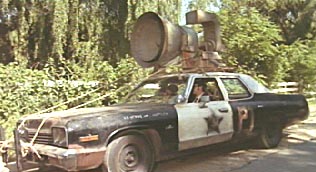
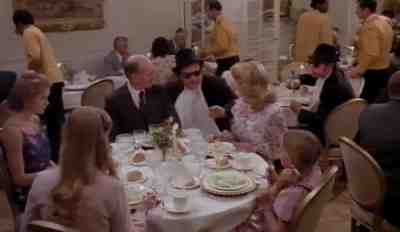






 Old peeling paint sign
Old peeling paint sign
 Big screen cavalry coming to the rescue
Big screen cavalry coming to the rescue









 Hacienda La Minita is a 700 acre coffee farm located in the steep terrain of Costa Rica's Tarrazu Valley. The coffees from this estate are considered by many to be the finest produced in the world.
Hacienda La Minita is a 700 acre coffee farm located in the steep terrain of Costa Rica's Tarrazu Valley. The coffees from this estate are considered by many to be the finest produced in the world.














 So how to give the fedora a more cool currency in modern fashions? Get a screen star known for being well-dressed and stylish to wear one. Enter Leonardo DiCaprio – job done. Yes, Leo is working the fedora look in Shutter Island, his latest collaboration with iconic director, Martin Scorsese. Working with Marty has taken Leo back to the mid-1800s with Gangs of New York, to the crime-filled streets of Boston for The Departed and to Hollywood’s glittering golden age in The Aviator and now they’re heading to 1954 for this adaptation of Dennis Lehane’s 2003 bestseller.
So how to give the fedora a more cool currency in modern fashions? Get a screen star known for being well-dressed and stylish to wear one. Enter Leonardo DiCaprio – job done. Yes, Leo is working the fedora look in Shutter Island, his latest collaboration with iconic director, Martin Scorsese. Working with Marty has taken Leo back to the mid-1800s with Gangs of New York, to the crime-filled streets of Boston for The Departed and to Hollywood’s glittering golden age in The Aviator and now they’re heading to 1954 for this adaptation of Dennis Lehane’s 2003 bestseller.



